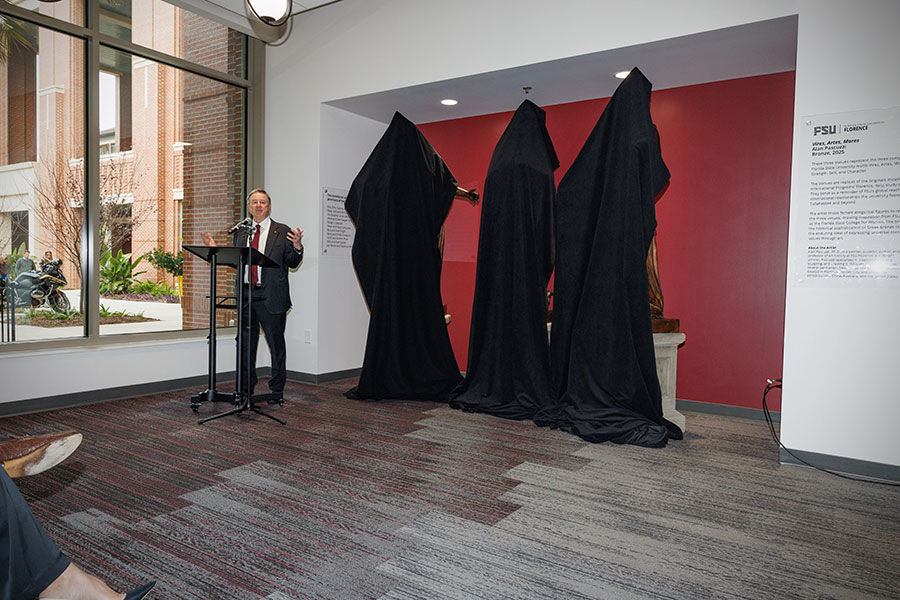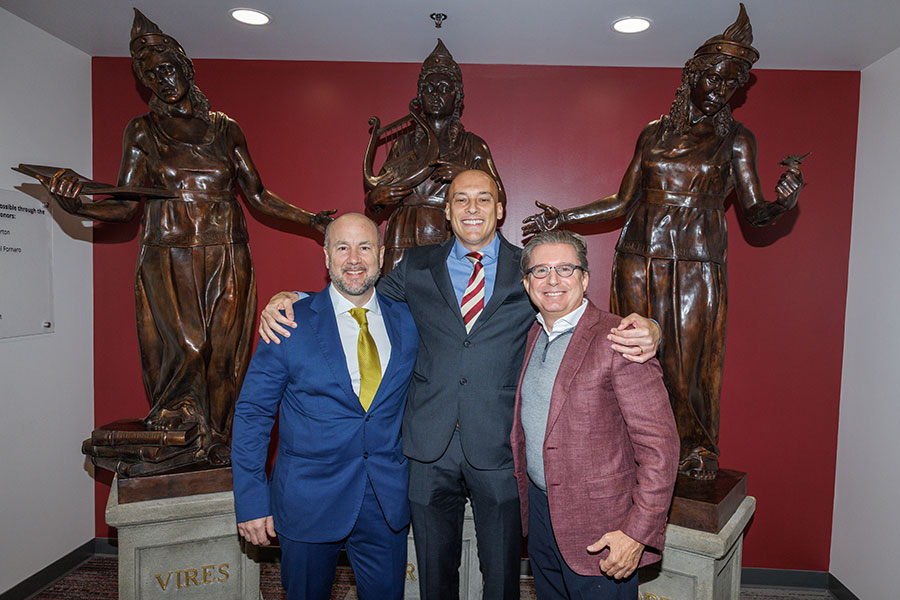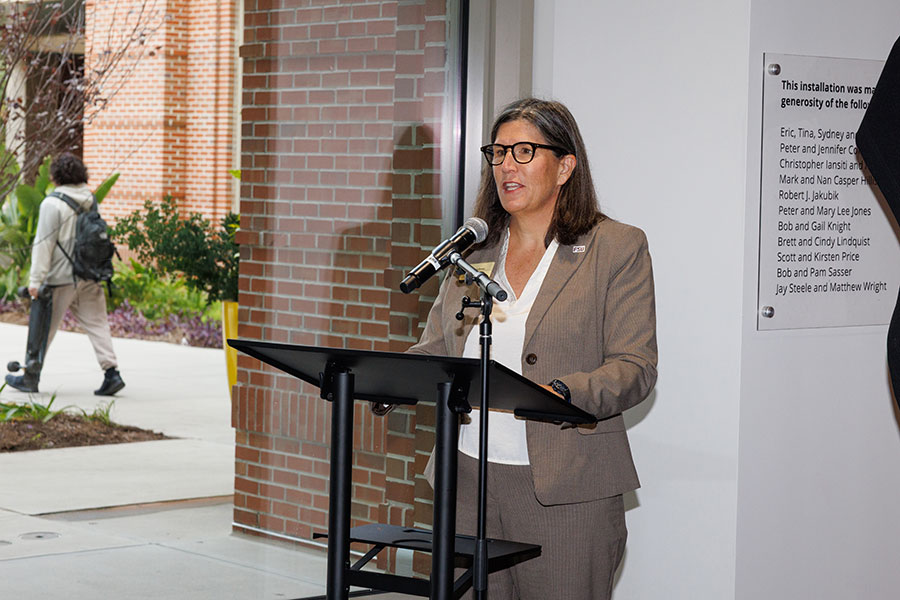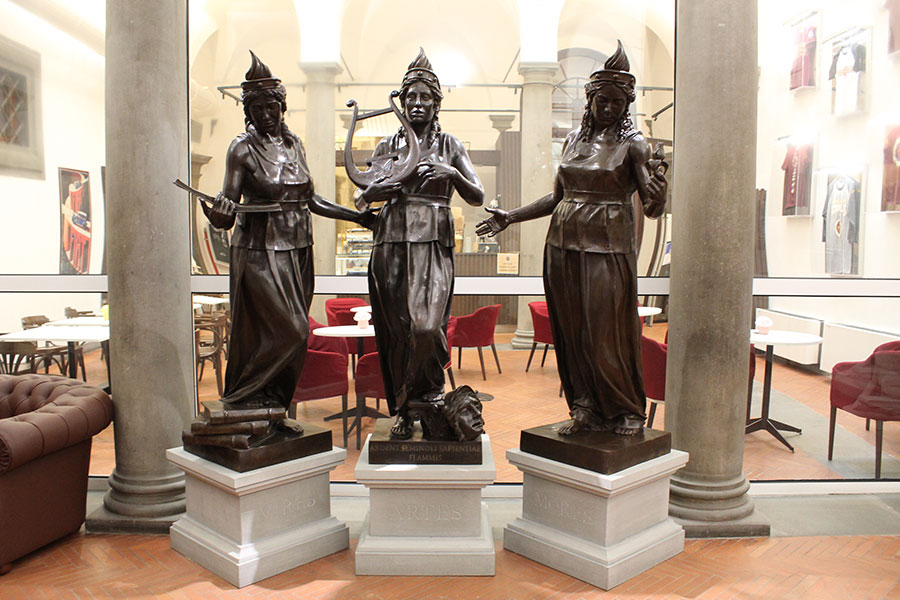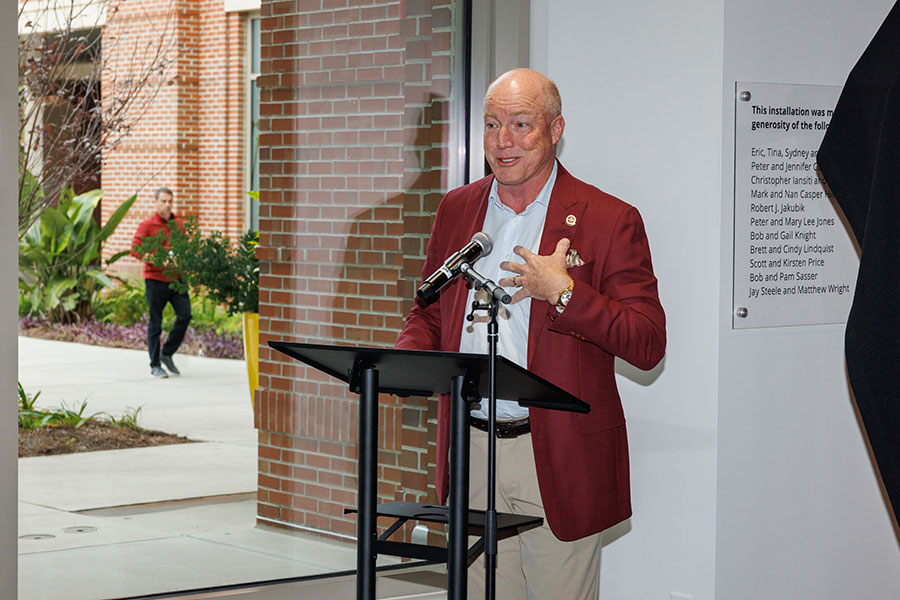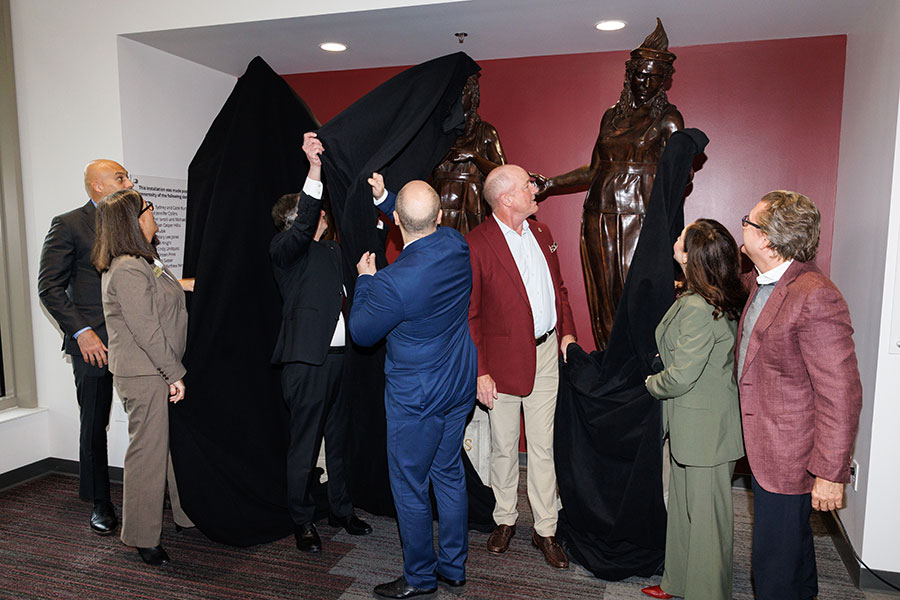
Florida State University unveiled three new striking bronze statues in the Student Union last week titled “Vires, Artes, Mores,” representing the university’s core values of strength, skill, and character.
Cast from the same molds originally created for sculptures displayed at the FSU Florence Study Center, the statues bring a piece of FSU’s international heritage home to Tallahassee.
Standing over eight feet tall atop custom pedestals crafted by the FSU Master Craftsman Studio, the figures are nearly identical to their counterparts at FSU Florence. Their Renaissance design evokes the rich artistic legacy of Florence, while their presence on campus serves as a powerful symbol of discovery, resilience and global connection.
“The commitment that we have at Florida State University to our international programs is profound,” FSU President Richard McCullough said. “These figures will be a lasting reminder of everything that we stand for and our enduring connection to the world. These statues are powerful reminders of what makes us Florida State University— strength, skill, and character.”
The statues were first created for the Florence Study Center in 2021 by Alan Pascuzzi, a Florence-based sculptor, painter, author and professor of art history at FSU Florence. Inspired by Botticelli’s Primavera and the concept of the Three Graces, Pascuzzi collaborated with then-director Frank Nero to design figures that embodied FSU’s guiding virtues.
“The first statues in Florence were an idea that grew from a friendship,” Pascuzzi said. “We came up with the idea of a work of art that tied Renaissance art with Florida State University virtues.”
Originally from Webster, New York, Pascuzzi earned his doctorate from Washington University in St. Louis, Missouri, before earning a Fulbright scholarship to Florence. His art can be found across the globe, with works featured throughout Italy and the Vatican, as well as other destinations in Europe, China, the U.S., and Australia.
“I’ve been lucky and blessed to have the opportunity to connect these different countries,” Pascuzzi said. “More than anything, it’s about the people that I’ve met and worked with.”
In another example of rich connections, Nancy de Grummond, the M. Lynette Thompson Professor of Classics, provided the Latin translations at the base of each statue. De Grummond is also the director of the Archaeology in Tuscany program administered through International Programs at Cetamura del Chianti.
The idea to bring the statues to Tallahassee originated with Chris Iansiti, chair of the FSU Foundation Board of Trustees, who envisioned a way to physically represent the university’s global reach. That vision gained momentum during a visit to Florence in early 2025 that included Vice President for Student Affairs Amy Hecht and Louisa Blenman, interim director of International Programs. International Programs is a direct support organization at FSU that provides quality international learning experiences for students. With generous support from other donors, the project culminated in this permanent installation.
“Having Alan Pascuzzi, such an accomplished artist and faculty member, create these works to share with our students for generations to come is a real treasure,” Blenman said. “We are fortunate to have scholars and artists who bridge our campuses and inspire global learning.”
Since its founding in 1966, FSU Florence has welcomed thousands of students seeking immersive international experiences. Just weeks after the arrival of the first cohort of students, the program faced the devastating Great Flood of Florence, during which FSU students and faculty joined local efforts to clean the city, earning the nickname Gli angeli del fango— “Mud Angels.”
“It’s a surreal experience,” said Charlie Panarella, director of FSU Florence, who was in Tallahassee for the unveiling. “I’m so used to seeing the statues every day at our study center, and to see them here cements the link between Florence and Florida State. I think it will inspire other students here at Florida State to study abroad, which is something that truly changes people’s lives.”
Today, the center hosts more than 600 students annually, offering courses in everything from real estate to wine and culture, all within a restored 16th-century palace near Florence’s historic landmarks.
“You can see it on students’ faces when you’re walking through the study center,” said FSU Board of Trustees Chairman Peter Collins. “Even though you’re thousands of miles away, it still feels like Florida State.”
While the Florence statues feature details specific to their Italian setting—such as a lily (fleur-de-lys) for Florence—the Tallahassee versions were adapted with local symbolism, like an orange blossom, to reflect Florida’s identity. Both sets honor the same virtues, but their iconography and inscriptions were thoughtfully tailored to their respective locations, connecting tradition and place.
The Vires, Artes, Mores statues now stand in a quiet alcove on the southwest side of the Student Union’s first floor, inviting students to reflect on the university’s values and its enduring connection to the world beyond campus.
To learn more about International Programs, visit international.fsu.edu. For more information about the FSU Florence Study Center, visit international.fsu.edu/studycenterflorence.aspx.






